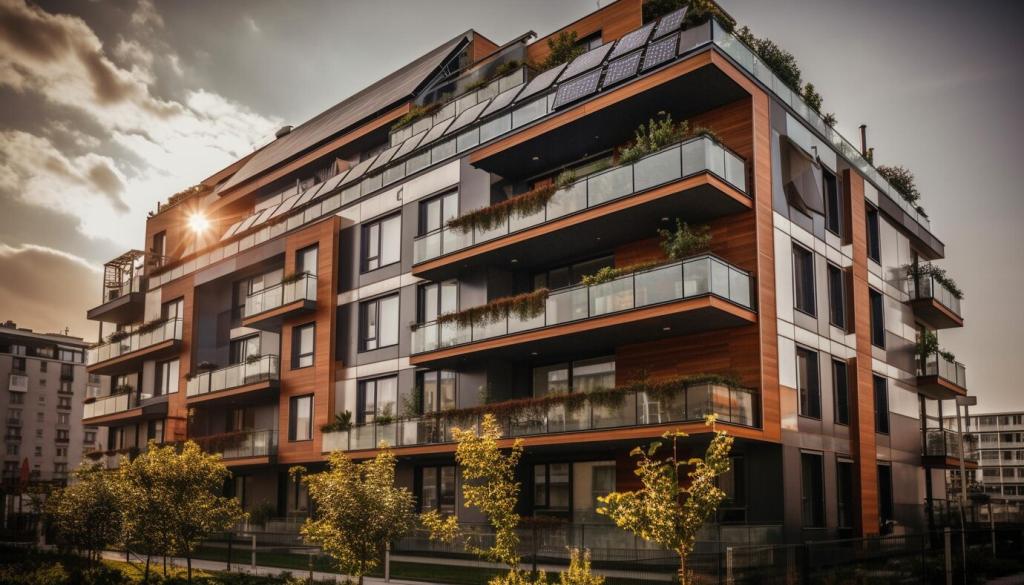Housing Innovation, Human Connection
Chosen theme: The Role of Housing Innovation in Urban Social Cohesion. Welcome to a space where design, policy, and everyday stories converge to show how better homes and neighborhoods can knit stronger bonds. Subscribe and join our community as we explore ideas that help cities feel like families.
Why Housing Innovation Shapes Urban Social Cohesion
Layouts that add shared courtyards, visible stairwells, and welcoming thresholds create frequent, low-stakes interactions. Over time, those micro-moments compound into trust, making it easier to borrow tools, exchange care, and organize around common goals.


Co‑housing clusters private apartments around kitchens, workshops, and gardens where people naturally gather. A pot of soup on Sunday or a tool library on Tuesday becomes the heartbeat of the place, turning maintenance chores into social glue.

Benches by mailboxes, stoops facing the street, and transparent ground floors make it easy to greet and linger. When edges feel safe and active, shy hellos become conversations, and repeated conversations become reliable neighborhood networks.

Wide paths for strollers and wheelchairs, shaded seating, and playful corners welcome everyone. When design dignifies elders, kids, and newcomers equally, it signals that every resident belongs—an essential precondition for cohesion that lasts.
Policy and Finance as Social Architecture
By removing land from speculation, community land trusts keep homes affordable and resident‑led. Co‑ops add democratic governance, aligning incentives with neighborly well‑being. Together, they turn tenure into participation rather than precariousness.

Smart Commons, Not Just Smart Units
Digital noticeboards, booking systems for shared rooms, and sensor‑guided energy savings can reduce friction in common spaces. When tools are simple and privacy‑respecting, residents spend less time negotiating logistics and more time connecting.
Platforms for Resident Decision‑Making
Lightweight voting tools and issue trackers make governance visible. When proposals, budgets, and maintenance updates are accessible, trust improves. People engage more when they can see progress and understand how their voice shaped outcomes.
Digital Equity as Social Infrastructure
Reliable broadband and device access are preconditions for participation. Without them, community notices, job searches, and schoolwork suffer. Treat connectivity like water and heat, and you unlock broader, fairer engagement in building life.
Story: The Warehouse That Became a Village
First Week: Coffee in the Freight Elevator
When the elevator stalled on move‑in day, a resident set up a coffee thermos and name tags. Strangers turned into teammates lifting boxes, swapping playlists, and laughing through the delay. An inconvenience became a founding ritual.
Six Months Later: The Courtyard Festival
Planters became a community herb garden, and the studio hosted free bike repair. The first festival featured homemade bread, a kids’ puppet show, and resident‑led dancing lessons. Newcomers were invited to bring one dish and one story.
What the Data Shows
After one year, resident surveys reported higher perceived safety and cross‑cultural friendships. Shared space bookings doubled, while noise complaints fell. Small design nudges, plus resident governance, translated into measurable trust and mutual support.
Guardrails Against Displacement
Stability as the Bedrock of Cohesion
Longer leases, predictable costs, and emergency rental support reduce churn. When households can plan, they invest socially—joining councils, mentoring teens, and caring for shared spaces. Stability multiplies the returns on every design improvement.
Right‑to‑Return and Placekeeping
During redevelopment, right‑to‑return policies maintain community ties. Placekeeping funds local art, markets, and traditions, ensuring innovation adds layers rather than replacing them. Culture continuity keeps the social memory alive across change.
Measuring Equity Alongside Connection
Track who benefits from amenities, who serves on councils, and whose stories are celebrated. Equity metrics reveal blind spots early, allowing course corrections that protect cohesion while expanding opportunity for those historically excluded.
Measuring and Learning Together
Practical Indicators You Can Track
Monitor participation in meetings, attendance at shared meals, mutual aid exchanges, and perceived safety. Pair counts with qualitative feedback about belonging, fairness, and voice. Numbers gain meaning when paired with resident narratives.
Methods That See the Invisible
Go beyond surveys: try social network mapping, story circles, and walking interviews. These methods capture weak ties and subtle frictions, revealing where small design tweaks could create big improvements in everyday connection.
Learning Loops and Public Storytelling
Share results in hallway displays or newsletters and invite responses. Celebrate micro‑wins, acknowledge setbacks, and iterate transparently. Visibility builds trust, and trust compels participation, creating a virtuous cycle of improvement and cohesion.
Host a small shared meal in a common area, start a tool‑sharing list, or propose a resident council. Post your idea on the building noticeboard and invite two neighbors to co‑lead, ensuring continuity and shared ownership.
Your Next Step: Build Cohesion Through Housing Innovation
Pilot a community room booking system, add seating near mailboxes, or budget for a resident connector role. Document outcomes and share case studies with us so others can replicate what worked and avoid what did not.
